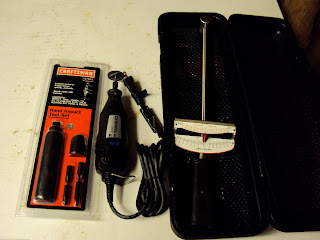Mechanics for the Non-mechanical





Alright, I don't claim to be mechanically minded, or to have a knack for "fixing things." However, you can pay to have someone do it for you or you can learn to do it yourself. In order to save more than a thousand dollars in labor costs on my 35 year old motorcycle, I decided to do three repair jobs myself. a. Stator (like an alternator in a car), b. water pump and front engine renewal (the water pump is the thing on the bottom right of the picture of the motor that looks like a fan) c. temperature switch, the arrow is pointing to it. (This tells the fan when to come on to cool off the radiator, like in a car).
These are some of the things I learned:
1. You need space. I bought a cheap, flimsy shelving unit for my garage to hold the parts I would be taking off my motorcycle. When you take anything apart you run out of floor space real fast.
2. You need spray bottles and foam bottles of stuff. Bolts and gaskets get stubborn after a few years. Old stuff gets very dirty and grimy. Carburetor cleaner is good for a lot of engine parts that need cleaning. Brake cleaner will cut through grime like nobody's business but be careful because it will eat away paint, plastic and your lungs if you let it. Gasket remover might or might not work, I'm not sure. WD-40 is great for loosening up bolts but PB blaster seems to be better. You also better have some anti-seize to put on bolts if you ever want to take the thing apart again. You're helping yourself in the future if you do this, sort of like the show "Lost" and you wish you could go back to the past so you could put some anti-seize on the bolts that won't come off in the present. Light oil also has a lot of uses. Finally, Gasgacinch is a treatment for when you're putting on gaskets. It dries tacky and helps keep the gasket in place while you put the parts all back together again.
3. You need tools. For these jobs I bought three new tools. I never thought I would need a torque wrench, but I did for two of these jobs. This was an inexpensive one, but it seems to have done the job. The Dremel wasn't as necessary as I thought it would be. I sort of wish I could take it back. The hand held Impact Driver saved my skin by breaking loose some super tough screws. You could get a power one for a lot more money than this cost, but this one did just fine. All three together cost me about a hundred dollars. Beyond these three I mostly used just a basic set of wrenches.
4. You need zip lock bags and cardboard diagrams to keep the nuts and bolts straight. The parts go in the zip lock, you label it and you're in good shape. You draw a diagram of your job on a piece of cardboard and put the bolts or screws in the appropriate spots. It works great. Pictures with a digital camera like I've taken here also help immensely.
5. Website of hobbyists. I have a Goldwing site where I can get the most amazing how-tos and advice. If you have a question, any question, no matter how stupid, just type it in and someone will read it in seconds. Within a minute or so you will start getting answers from people who actually know how to fix things. And they're not smart-alecs about it either.
So fix things. At least give it a try. At a website I looked at, the host said, "Learn to fix things, don't be an embarrassment to other men." I was already fixing things, but it made me smile and I took it as encouragement.
